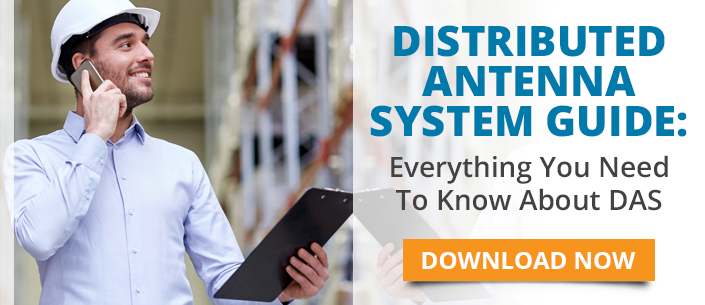 Recently, businesses that use wireless technology have been turning to Citizens Broadband Radio Service or CBRS as a solution to effective communications, especially indoors. This LTE-based solution can enable both in-building and outdoor coverage, massively expanding capacity. Here’s what you need to know about CBRS or OnGo when choosing a wireless solution.
Recently, businesses that use wireless technology have been turning to Citizens Broadband Radio Service or CBRS as a solution to effective communications, especially indoors. This LTE-based solution can enable both in-building and outdoor coverage, massively expanding capacity. Here’s what you need to know about CBRS or OnGo when choosing a wireless solution.
What is Citizens Broadband Radio Service?
According to the FCC, CBRS was established for shared wireless broadband use of the 3550-3700 MHz band (3.5 GHz Band). Operation of the service is based on federal rules that provide many benefits for national defense agencies, the general public, and industrial applications. The technology provides performance in response to growing wireless usage and mobile data demands, which have taxed today’s networks that can’t keep up with the need for coverage and capacity. Essentially, because of all the mobile devices in operation, there is a shortage of frequencies available for wireless communication services. This void is particularly prominent indoors, where 80% of mobile phone usage occurs, according to Alliance CBRS.
The new 3.5 GHz spectrum CBRS will alleviate this demand. Under the plan, a three-tier sharing paradigm coordinates spectrum access among incumbent military radars and satellite ground stations and new commercial users. It makes additional spectrum available for flexible wireless broadband use, while ensuring interference protection and uninterrupted use by the incumbent users.
According to the FCC, the three tiers are: Incumbent Access, Priority Access, and General Authorized Access.
As a result, usage is individually requested and assigned on a case-by-case basis. When use of the spectrum is no longer required, the specific channel is freed up and made available to other users.
Who will benefit from the Citizens Broadband Radio Service?
Basically everyone in the United States will benefit from this technology. Mobile operators will be able to leverage this band to augment their existing mobile coverage. Cable operators will be able to utilize this spectrum in their new wireless offerings.
Organizations in the United States will for the first time be able to build their own LTE networks to address their most challenging business-critical use cases with CBRS.
What is OnGo?
The CBRS Alliance is an effort of multiple organizations across the US to support the common interests of members, implementors and operators for the development, commercialization and adoptions of LTE solutions for the US 3.5 GHz Citizens Broadband Radio Service. The CBRS Alliance uses the name OnGo for wireless services in this band.
According to the CBRS Alliance, advantages of OnGo involve its ability to provide:
- Secure, cost-effective LTE coverage indoors, supporting new Private LTE and IoT applications.
- High-performance LTE services in the classroom, in administrative offices, and in university housing.
- 150 MHz of sparsely used spectrum for LTE capacity expansion -- without the complexity of sharing the band with Wi-Fi.
- Opportunities for traditional operators and new entrants to enable both in-building wireless and outdoor mobile coverage and capacity expansion at lower cost.
- A higher level of network quality control as compared to Wi-Fi offload.
Citizens Broadband Radio Service can improve coverage, especially indoors, and -- like distributed antenna systems -- can be a solution to eliminating spotty cell phone coverage and dead zones.
For help selecting, installing, and servicing the perfect system for your workforce, contact Chicago Communications today!


